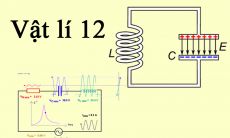Read the following passage and mark the letter A, B, C, or D to indicate the correct answer to each of the questions.
As the twentieth century began, the importance of formal education in the United States increased. The frontier had mostly disappeared and by 1910 most Americans lived in towns and cities. Industrialization and the bureaucratization of economic life combined with a new emphasis upon credentials and expertise to make schooling increasingly important for economic and social mobility. Increasingly, too, schools were viewed as the most important means of integrating immigrants into American society.
The arrival of a great wave of southern and eastern European immigrants at the turn of the century coincided with and contributed to an enormous expansion of formal schooling. By 1920 schooling to age fourteen or beyond was compulsory in most states, and the school year was greatly lengthened. Kindergartens, vacation schools, extracurricular activities, and vocational education and counseling extended the influence of public schools over the lives of students, many of whom in the larger industrial cities were the children of immigrants. Classes for adult immigrants were sponsored by public schools, corporations, unions, churches, settlement houses, and other agencies.
Reformers early in the twentieth century suggested that education programs should suit the needs of specific populations. Immigrant women were once such population. Schools tried to educate young women so they could occupy productive places in the urban industrial economy, and one place many educators considered appropriate for women was the home.
Although looking after the house and family was familiar to immigrant women, American education gave homemaking a new definition. In pre-industrial economies, homemaking had meant the production as well as the consumption of goods, and it commonly included income-producing activities both inside and outside the home, in the highly industrialized early-twentieth-century United States, however, overproduction rather than scarcity was becoming a problem. Thus, the ideal American homemaker was viewed as a consumer rather than a producer. Schools trained women to be consumer homemakers cooking, shopping, decorating, and caring for children "efficiently" in their own homes, or if economic necessity demanded, as employees in the homes of others. Subsequent reforms have made these notions seem quite out-of-date.
Câu 22 : According to the passage, early-twentieth century education reformers believed that _______.
Hãy suy nghĩ và trả lời câu hỏi trước khi xem đáp án
Lời giải:
Báo saiA. các tập đoàn và tổ chức khác đã làm hỏng tiến trình giáo dục
B. các chương trình đặc biệt nên được thiết lập trong các cộng đồng biên giới để hiện đại hóa chúng
C. các nhóm dân số khác nhau cần các kiểu giáo dục khác nhau
D. nhiều phụ nữ nên tham gia vào nền giáo dục và nền công nghiệp
Thông tin: Reformers early in the twentieth century suggested that education programs should suit the needs of specific populations.
Tạm dịch: Các nhà cải cách đầu thế kỷ XX cho rằng các chương trình giáo dục phải phù hợp với nhu cầu của các nhóm dân số cụ thể.
=> Câu C đúng
Câu 23 : The word "it" in line 3 in paragraph 4 refers to _____.
Hãy suy nghĩ và trả lời câu hỏi trước khi xem đáp án
Lời giải:
Báo saiTừ "it" trong dòng 3 trong đoạn 4 đề cập đến _____.
A. giáo dục
B. sự sản xuất
C. việc nội trợ
D. sự tiêu dùng
In pre-industrial economies, homemaking had meant the production as well as the consumption of goods, and it commonly included income-producing activities both inside and outside the home, ...
It thay thế cho homemaking => Đáp án C đúng
Câu 24 : The paragraph preceding the passage probably discusses _________________.
Hãy suy nghĩ và trả lời câu hỏi trước khi xem đáp án
Lời giải:
Báo saiĐoạn văn trước đoạn văn này có lẽ thảo luận về______
A. việc giáo dục chính quy ở Hoa Kỳ vào thế kỷ XIX.
B. công nghiệp hóa và quan liêu hóa trong đời sống kinh tế Hoa Kỳ trong thế kỷ XIX .
C. phương tiện quan trọng nhất để hòa nhập người nhập cư vào xã hội Mỹ trong thế kỷ XIX.
D. quá trình đô thị hóa ở Hoa Kỳ vào thế kỷ XIX.
Thông tin: As the twentieth century began, the importance of formal education in the United States increased. (Khi thế kỷ XX bắt đầu, tầm quan trọng của giáo dục chính quy ở Hoa Kỳ tăng lên.)
Đoạn văn trước đó có thể thảo luận việc giáo dục chính quy ở Hoa Kỳ vào thế kỷ XIX.
=> Đáp án A đúng
Câu 25 : It can be inferred from paragraph 1 that one important factor in the increasing importance of education in the United States was _________________________.
Hãy suy nghĩ và trả lời câu hỏi trước khi xem đáp án
Lời giải:
Báo saiCó thể suy ra từ đoạn 1 rằng một yếu tố quan trọng trong việc tầm quan trọng ngày càng tăng của giáo dục tại Hoa Kỳ là __________________.
A. sự gia tăng số lượng giáo viên được đào tạo
B. sự mở rộng vấn đề kinh tế của trường học
C. sự đô thị hóa ngày càng tăng của cả nước
D. số lượng trường học ngày càng tăng trong các cộng đồng biên giới
Thông tin: The frontier had mostly disappeared and by 1910 most Americans lived in towns and cities.
Tạm dịch: Biên giới hầu như đã biến mất và đến năm 1910, hầu hết người Mỹ đều sống ở các thị trấn và thành phố (tức quá trình đô thị hóa).
=> Đáp án C đúng
Câu 26 : According to the passage, one important change in United States education by the 1920's was that _________________________________.
Hãy suy nghĩ và trả lời câu hỏi trước khi xem đáp án
Lời giải:
Báo saiTheo đoạn văn, một thay đổi quan trọng trong giáo dục Hoa Kỳ vào những năm 1920 là đó là__________.
A. số lượng thời gian dành cho giáo dục chính quy bị hạn chế
B. hầu hết các nơi yêu cầu trẻ em đến trường
C. người lớn và trẻ em học cùng một lớp
D. các quy định mới được áp dụng cho giáo dục phi truyền thống
Thông tin: By 1920 schooling to age fourteen or beyond was compulsory in most states, and the school year was greatly lengthened. (Đến năm 1920, việc học đến mười bốn tuổi trở lên là bắt buộc ở hầu hết các tiểu bang, và năm học đã kéo dài rất nhiều.)
=> Đáp án D đúng
Đề thi HK2 môn Tiếng Anh 11 năm 2022-2023
Trường THPT Chu Văn An














